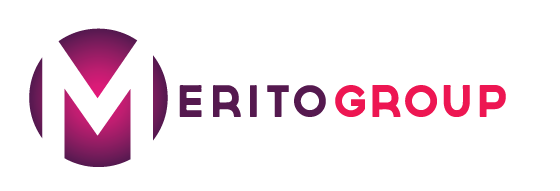With the rise of remote work, more companies are expanding their talent pool to include remote employees. Remote hiring can be an effective way to bring in top talent from anywhere in the world, but it can also present unique challenges when it comes to onboarding.
In a 2020 survey by Workable, respondents in HR reported remote onboarding or training as the biggest hiring challenge during the pandemic, and it continues to challenge employers. – Harvard Business Review
As we have seen, remote work and hybrid work aren’t going away. In fact, these types of employment are growing so quickly that the market for office real estate is plummeting.
Remote work risks wiping $800 billion from the value of office buildings in major cities worldwide by 2030 as the post-pandemic trend pushes up office vacancy rates and drives down rents, according to a new report. – London CNN
Like any other change in operations, the business that embraces change will be left to succeed, while those who can’t lose out to their competitors. One way your team can combat the challenges of remote and hybrid work is by creating effective onboarding strategies for remote employees. Whether your remote and hybrid employees are direct hires, temp-to-hire, or even contingent labor, a consistent and universal onboarding strategy is one way to ensure the success of your team.
Step 1: When hiring remote employees create a clear onboarding plan that is consistent throughout departments
The first step in onboarding a remote employee is to create a clear plan that outlines the steps they need to take to get up to speed with your company and their role. This plan should cover everything from the technology and tools they will need to use to complete their work, to the culture and values of your company.
It is a standard that is often overlooked, even with in-person jobs, but we encourage your team to create shareable resources that explain the general details and culture of your company. These resources should be high-level and should never share any sensitive information. The goal of these resources is to give a quick education, company history, brand standard, and general overview. It’s also a great idea to outline your company’s benefits in a similar format to share with all employees, in-person and remotely.
Using a talent acquisition firm is one way to create an effective onboarding plan. These firms specialize in finding and recruiting top talent and can help you create a tailored onboarding plan that considers the needs and skills of your remote employee.
Step 2: Communicate frequently and clearly when onboarding a remote employee
When onboarding a remote employee, it’s essential to communicate frequently and clearly. Remote workers don’t have the luxury of being able to pop into your office to ask a quick question, so it is important to set up regular check-ins to make sure they have the support they need.
These check-ins can take the form of daily or weekly video calls, or regular email updates. The key is to establish a regular cadence of communication that allows you to stay in touch and address any questions or concerns your remote employee may have.
Your team should utilize some sort of chat program, other than email and text. Merito Group’s internal team uses Microsoft Teams. It is a platform that allows us to send quick messages to one another without the formality of an email, and without needing personal numbers. On teams, we can call, “text,” and video chat as needed and can connect our notifications to our phones.
Step 3: Build a sense of community and share the company culture
One of the biggest challenges of remote work is the isolation that can come from working from home. To combat this, building a sense of community among your remote team members is important.
This can be done through regular team-building activities, virtual social events, and online chat channels where team members can connect and collaborate. By building a sense of community, you can help your remote employees feel more connected to your company and more invested in their work.
“When I joined Merito Group, I was nervous to be working so far away from my team. I was half a country away and was worried that I would feel isolated and removed from the group. I couldn’t have been more wrong! There is a way to set up a remote employee for success.
In an age where remote work is continuing to rise, companies need to find the best communication channels for their businesses and team. Teams should engage in friendly conversations before starting the meeting, just as you would in the office. Team members should still develop relationships with their co-workers, and this can easily be achieved through chat programs and video calls. When meeting with your team, always opt for video appearances and speak face-to-face.
“There are so many benefits of working remotely, and when a company onboards a remote employee right, they will never feel far from their team,” says Ellie LaPosha, Marketing Manager for Merito Group.
Company Culture Extends to Remote Employees
Onboarding a remote employee requires a different approach than onboarding an in-person employee. By creating a clear onboarding plan, communicating frequently and clearly, and building a sense of community, you can help your remote employees feel supported and connected to your company from day one. And if you are struggling with remote job searches, a talent acquisition firm such as Merito Group can help you find top talent from anywhere in the world. With the right approach, onboarding a remote employee can be seamless and successful.



I completely agree with Merito Group’s comment on the importance of having a structured solution for onboarding remote employees, especially when it comes to new leaders. Onboarding remote executive hires and implementing remote management practices require careful planning and execution to ensure a smooth transition and successful integration into the company culture.
To effectively onboard remote executive hires, it is essential to follow these six essential steps:
1. Define clear expectations: Communicate the company’s mission, values, and goals to the new executive hire, ensuring they have a clear understanding of their role and responsibilities. Setting expectations from the beginning helps remote executives align their work and contributions with the company’s vision.
2. Provide necessary resources: Equip remote executives with the tools, technology, and resources they need to carry out their duties effectively. This includes providing access to collaboration platforms, project management tools, and any other software or equipment necessary for their role.
3. Establish effective communication channels: Remote executives need to feel connected and supported despite the physical distance. Establish regular check-ins, video conferences, and virtual team meetings to facilitate open communication and foster a sense of belonging.
4. Assign a mentor or buddy: Pairing new remote executives with an experienced mentor or buddy within the organization can help them quickly acclimate to the company culture and navigate their new role. This mentor can offer guidance, answer questions, and provide support throughout the onboarding process.
5. Provide comprehensive training: Remote executives may require specific training to familiarize themselves with the company’s processes, systems, and protocols. Offer comprehensive training sessions tailored to their needs, whether through online courses, webinars, or virtual workshops.
6. Set realistic goals and milestones: Collaborate with remote executives to establish realistic goals and milestones, providing them with a clear roadmap for success. Regularly review progress and provide constructive feedback to keep them motivated and engaged.
By following these steps, companies can ensure a successful onboarding process for remote executive hires and set them up for long-term success in their new roles. Onboarding remote employees requires a strategic approach to overcome the unique challenges, and having a structured solution in place is indeed pivotal to achieving this success.